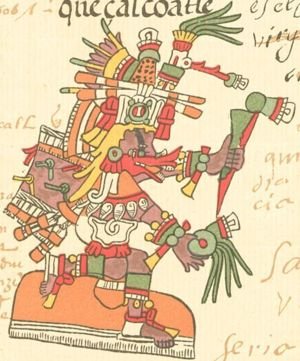|
||||||||

GD18
|
niu | Already Bishop Jaussen noticed how Metoro consistently named this glyph type niu i.e. coconut tree (cocotier). | ||||||
A few preliminary remarks and imaginations: 1. This type of glyph appears during the dark nights between the end of one year and the beginning of next year, the time when gods are born. "...the great high priest and monarch of the Golden Age in the Toltec city of Tula, the City of the Sun, in ancient Mexico, whose name, Quetzalcoatl, has been read to mean both 'the Feathered Serpent' and 'the Admirable Twin', and who was fair of face and white of beard, was the teacher of the arts to the people of pre-Columbian America, originator of the calendar, and their giver of maize. His virgin mother, Chimalman - the legend tells - had been one of the three sisters to whom God, the All-Father, had appeared one day under his form of Citlallatonac, 'the morning'. The other two had been struck by fright, but upon Chimalman God breathed and she conceived. She died, however, giving birth, and is now in heaven, where she is revered under the honourable name of 'the Precious Stone of Sacrifice', Chalchihuitzli. Quetzalcoatl, her child, who is known both as the Son of the Lord of the High Heavens and as the Son of the Lord of the Seven Caves, was endowed at birth with speech, all knowledge, and all wisdom, and in later life, as priest-king, was of such purity of character that his realm flourished gloriously throughout the period of his reign. His temple-palace was composed of four radiant apartments: one toward the east, yellow with gold; one towards the west, blue with turquoise and jade; one toward the south, white with pearls and shells; one towards the north, red with bloodstones - symbolizing the cardinal quarters of the world over which the light of the sun holds sway." (Campbell)
Quetzalcoatl as depicted in the Codex Telleriano-Remensis. (Ref. Wikipedia) |
||||||||
